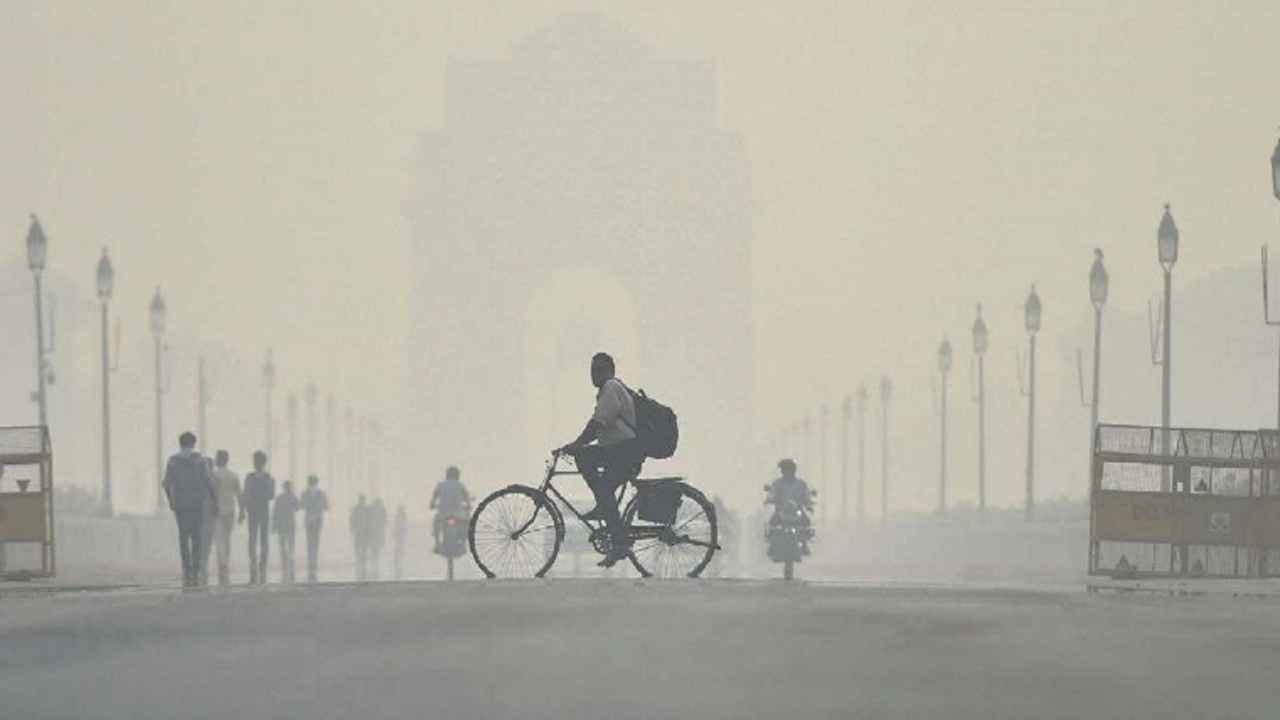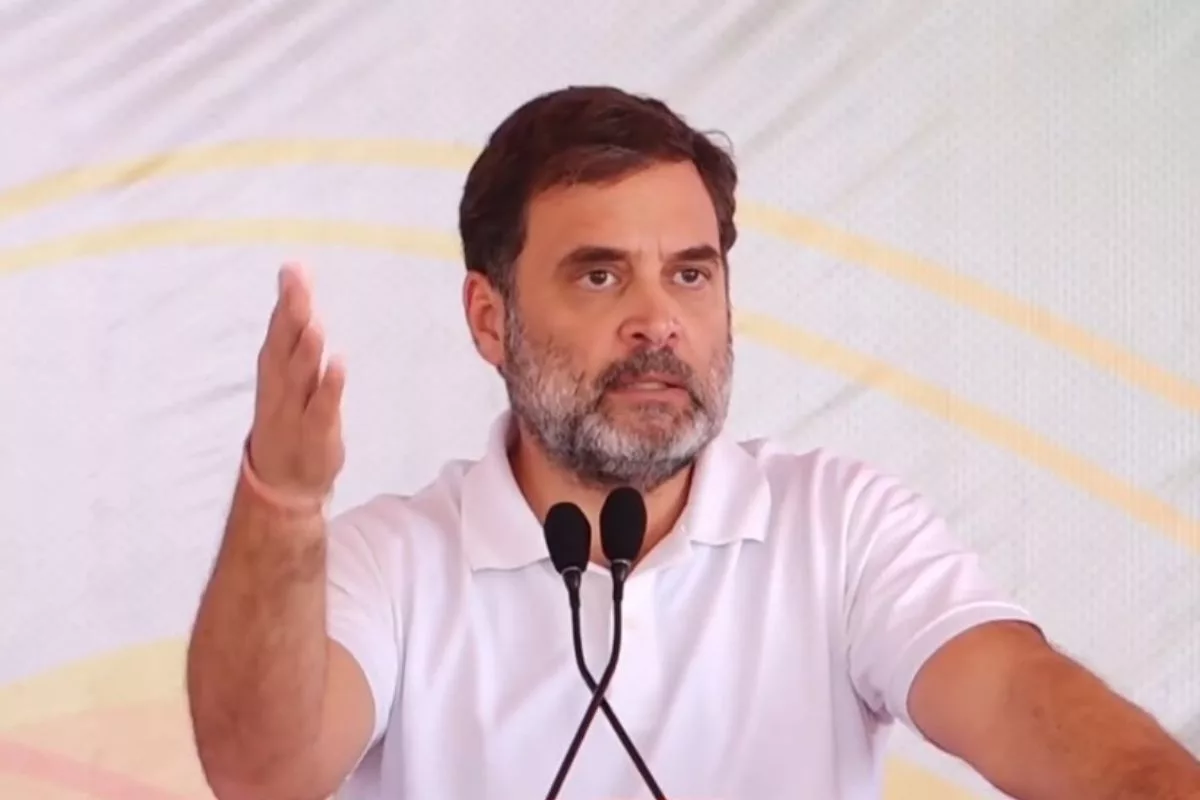[vc_row][vc_column][vc_column_text]Incessant rains on Tuesday wreaked havoc in Mumbai and its adjoining areas as it flooded the low-lying areas leading to traffic snarls and delay in suburban railways.
In scenes reminiscent of the deluge in July 2005, incessant rains for the fourth straight day, on Tuesday, drowned Mumbai down under, flooding vast areas of the city, disrupting road, rail and air traffic and throwing life out of gear.
By Tuesday evening, Mumbai had received rainfall that was nine times higher than the average and if predictions by the Met department are anything to go by, then very heavy rains will continue to lash the Maharashtra capital and its hinterland over the next 24-48 hours. The Brihanmumbai Municipal Corporation (BMC) has issued an alert, asking Mumbaikars to be cautious and preferably to stay indoors.
The city’s Colaba weather station, which covers south Mumbai, recorded 37.6mm of rain, while the Santacruz weather station which monitors the suburbs recorded 126mm rain from 8.30am to 2.30pm, according to the India Meteorological Department (IMD). The Colaba station recorded 152mm of rain between Monday andTuesday mornings, the highest 24-hour rainfall this year.
Various areas in north Konkan also recorded heavy to very heavy rain in the last 24 hours with Alibaug recording 161mm and adjoining regions of Dahanu and Harnai also recording three digit figures. Navi Mumbai too received 119.85mm rain in the past 24 hours.
“A low-pressure area that had developed over Odisha has moved westwards towards the central parts of the country. There is an upper air cyclonic circulation over the eastern part of the state and a trough that extends over the west coast. All these factors have led to very heavy rain over the Konkan coast, especially Mumbai,” said KS Hosalikar, deputy director general, western region, India Meteorological Department (IMD).
A combination of high tide and heavy rains can push water into the low lying areas of the city, which often clogs the storm water drains leading to more inundation. A high tide up to 3.29metres is expected to hit at 4.30pm
The continuous downpour had left most parts of the city – especially its low-lying regions of the western and eastern suburbs – submerged by Tuesday afternoon, with road traffic being the obvious casualty. Serpentine jams were reported in large parts of Mumbai while on several arterial roads like SV Road and the Eastern and Western Express Highways, vehicles that almost seemed to be floating on the waterlogged roads were captured by media channels.
The local train services – often termed as the lifeline of the city that never sleeps – were also severely disrupted. “Due to water logging on tracks & point failure at Bandra following very heavy rains, 3 lines except UP Fast line are affected. Efforts are on to start traffic on 3 lines (except UP fast line) at Bandra as soon as possible by attending the points,” the Western Railway tweeted.
Predictably, the worst hit areas were Hindmata, Lalbaug, GTB Nagar, Sion, Mulund, and low lying areas of Parel, Worli, and Dadar. Areas near the Byculla railway station in the east and towards the Byculla zoo were also under water.
Mumbai Police issued orders for traffic diversions at select places as traffic policemen tried to ease congestion at various points in the city. However, the traffic department had failed to issue any advisory despite the flood-like situation till Tuesday evening.
“South bound #traffic towards Matunga diverted to Wadala due to water logging on EEH (Amar Mahal) SG Barve Rd & VN Purav Rd,” Mumbai Police tweeted from its official handle.
The deluge also forced shut the 5.6-kilometre Bandra-Worli sea link, a key landmark of the city that helps drastically reduce driving time between the Western suburbs and south Mumbai, for the first time on Tuesday since it opened in 2009.
The Mumbai traffic police also recommended that people avoid venturing out to areas like Worli and Haji Ali given the warning of high tides and the risk of loss to life from big waves of the Arabian Sea crashing on to the shore.
Mumbai Police have also urged commuters and motorists to dial 100 to apprise them of the situation if they are stuck somewhere. People can contact Mumbai Police on Twitter by tagging @MumbaiPolice.
Mumbaikars took to twitter share visuals of flooding and traffic snarls.[/vc_column_text][vc_raw_html]JTNDYmxvY2txdW90ZSUyMGNsYXNzJTNEJTIydHdpdHRlci10d2VldCUyMiUyMGRhdGEtbGFuZyUzRCUyMmVuJTIyJTNFJTNDcCUyMGxhbmclM0QlMjJlbiUyMiUyMGRpciUzRCUyMmx0ciUyMiUzRU1vbnNvb24lMjBmdXJ5JTIwaW4lMjBNdW1iYWkuJTIwJTNDYnIlM0VTZXZlcmUlMjBkZWx1Z2UlMjBpbiUyMFNpb24uJTIwJTNDYSUyMGhyZWYlM0QlMjJodHRwcyUzQSUyRiUyRnR3aXR0ZXIuY29tJTJGaGFzaHRhZyUyRk11bWJhaVJhaW5zJTNGc3JjJTNEaGFzaCUyMiUzRSUyM011bWJhaVJhaW5zJTNDJTJGYSUzRSUyMCUzQ2ElMjBocmVmJTNEJTIyaHR0cHMlM0ElMkYlMkZ0LmNvJTJGYVo5VDBDR3VuZiUyMiUzRXBpYy50d2l0dGVyLmNvbSUyRmFaOVQwQ0d1bmYlM0MlMkZhJTNFJTNDJTJGcCUzRSUyNm1kYXNoJTNCJTIwQW5hbnRoJTIwU2hyZXlhcyUyMCUyOCU0MGFuYW50aHNocmV5YXMlMjklMjAlM0NhJTIwaHJlZiUzRCUyMmh0dHBzJTNBJTJGJTJGdHdpdHRlci5jb20lMkZhbmFudGhzaHJleWFzJTJGc3RhdHVzJTJGOTAyNDYyMzU5MzY4NzIwMzg0JTIyJTNFQXVndXN0JTIwMjklMkMlMjAyMDE3JTNDJTJGYSUzRSUzQyUyRmJsb2NrcXVvdGUlM0UlMEElM0NzY3JpcHQlMjBhc3luYyUyMHNyYyUzRCUyMiUyRiUyRnBsYXRmb3JtLnR3aXR0ZXIuY29tJTJGd2lkZ2V0cy5qcyUyMiUyMGNoYXJzZXQlM0QlMjJ1dGYtOCUyMiUzRSUzQyUyRnNjcmlwdCUzRSUwQSUyMCUwQSUzQ2Jsb2NrcXVvdGUlMjBjbGFzcyUzRCUyMnR3aXR0ZXItdHdlZXQlMjIlMjBkYXRhLWxhbmclM0QlMjJlbiUyMiUzRSUzQ3AlMjBsYW5nJTNEJTIyZW4lMjIlMjBkaXIlM0QlMjJsdHIlMjIlM0VUeXBob29uLWxpa2UlMjB3ZWF0aGVyLkNhbmNlbGxpbmclMjBteSUyMGZsaWdodCUyMHRvJTIwRGVsaGklMjBmb3IlMjBhbiUyMEluZG8lMjBBdXN0cmFsaWFuJTIwbWVldGluZy5UZWxsaW5nJTIwbXklMjBBdXNzaWUlMjBmcmllbmRzJTIwSSUyNiUyMzM5JTNCbSUyMCUyNiUyMzM5JTNCRG93biUyMFVuZGVyJTI2JTIzMzklM0IlMjB3YXRlciUyMGluJTIwTXVtYmFpJTIwJTNDYSUyMGhyZWYlM0QlMjJodHRwcyUzQSUyRiUyRnQuY28lMkYxTEJaSkJyMVVtJTIyJTNFcGljLnR3aXR0ZXIuY29tJTJGMUxCWkpCcjFVbSUzQyUyRmElM0UlM0MlMkZwJTNFJTI2bWRhc2glM0IlMjBhbmFuZCUyMG1haGluZHJhJTIwJTI4JTQwYW5hbmRtYWhpbmRyYSUyOSUyMCUzQ2ElMjBocmVmJTNEJTIyaHR0cHMlM0ElMkYlMkZ0d2l0dGVyLmNvbSUyRmFuYW5kbWFoaW5kcmElMkZzdGF0dXMlMkY5MDI0MDk5Mjg0NTQ5MjYzMzYlMjIlM0VBdWd1c3QlMjAyOSUyQyUyMDIwMTclM0MlMkZhJTNFJTNDJTJGYmxvY2txdW90ZSUzRSUwQSUzQ3NjcmlwdCUyMGFzeW5jJTIwc3JjJTNEJTIyJTJGJTJGcGxhdGZvcm0udHdpdHRlci5jb20lMkZ3aWRnZXRzLmpzJTIyJTIwY2hhcnNldCUzRCUyMnV0Zi04JTIyJTNFJTNDJTJGc2NyaXB0JTNFJTBBJTIwJTBBJTNDYmxvY2txdW90ZSUyMGNsYXNzJTNEJTIydHdpdHRlci10d2VldCUyMiUyMGRhdGEtbGFuZyUzRCUyMmVuJTIyJTNFJTNDcCUyMGxhbmclM0QlMjJlbiUyMiUyMGRpciUzRCUyMmx0ciUyMiUzRTV0aCUyMHBpY3R1cmVzJTIwTXVtYmFpJTIwJTNDYSUyMGhyZWYlM0QlMjJodHRwcyUzQSUyRiUyRnQuY28lMkZ0d1RGTnhSR2NWJTIyJTNFcGljLnR3aXR0ZXIuY29tJTJGdHdURk54UkdjViUzQyUyRmElM0UlM0MlMkZwJTNFJTI2bWRhc2glM0IlMjBBcmphbiUyMEhhc3NpamElMjAlMjglNDBIYXNzaWphQXJqYW4lMjklMjAlM0NhJTIwaHJlZiUzRCUyMmh0dHBzJTNBJTJGJTJGdHdpdHRlci5jb20lMkZIYXNzaWphQXJqYW4lMkZzdGF0dXMlMkY5MDI0NjIyMDI2NjUzMDQwNjQlMjIlM0VBdWd1c3QlMjAyOSUyQyUyMDIwMTclM0MlMkZhJTNFJTNDJTJGYmxvY2txdW90ZSUzRSUwQSUzQ3NjcmlwdCUyMGFzeW5jJTIwc3JjJTNEJTIyJTJGJTJGcGxhdGZvcm0udHdpdHRlci5jb20lMkZ3aWRnZXRzLmpzJTIyJTIwY2hhcnNldCUzRCUyMnV0Zi04JTIyJTNFJTNDJTJGc2NyaXB0JTNF[/vc_raw_html][vc_column_text]Television visuals showed people wading through chest-high water. The incessant rains have also affected the city’s most popular festival, Ganeshotsav, that began on August 25.
The downpour prompted many schools to send children home early, although others were on holiday for the festival. The School Bus Owners Association, which works with 200 schools in Mumbai, said schools in western suburbs stayed shut and many cancelled their afternoon shifts due to waterlogging.
Health services across the metropolitan city were also disrupted as water entered hospital compounds across the city. KEM Hospital, Mumbai’s largest municipal medical facility, went under knee deep water. “We have already moved about 30 patients from ground floor to upper floors. We are taking all measurements to ensure patients aren’t inconvenienced,” Dr Avinash Supe, KEM Hospital’ dean, said.[/vc_column_text][/vc_column][/vc_row]
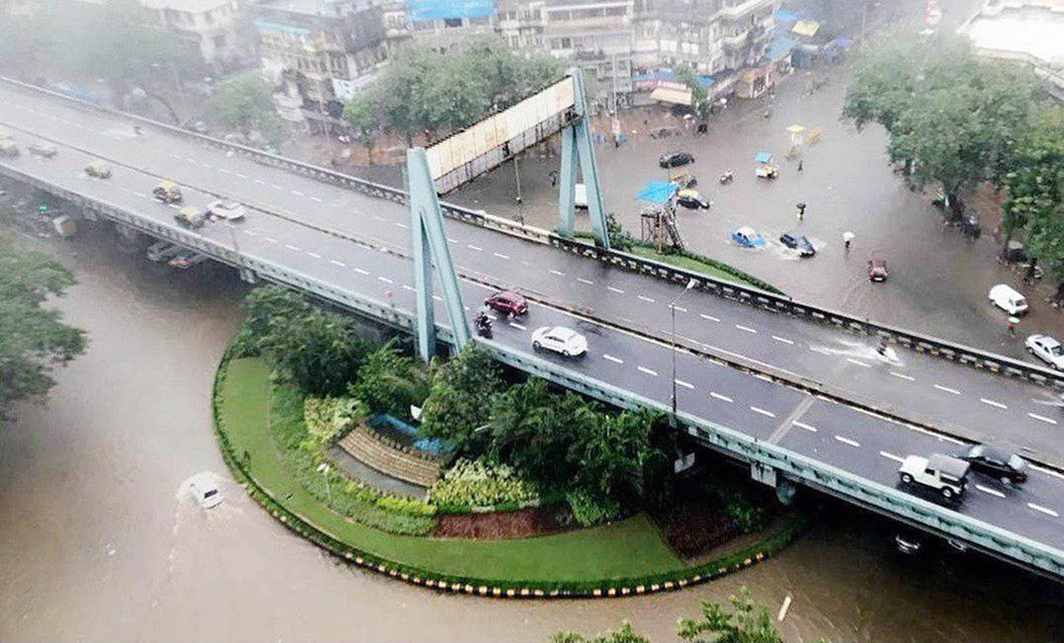

 India News17 hours ago
India News17 hours ago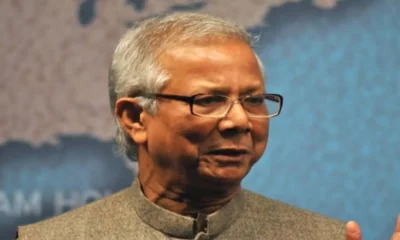
 Latest world news17 hours ago
Latest world news17 hours ago
 India News10 hours ago
India News10 hours ago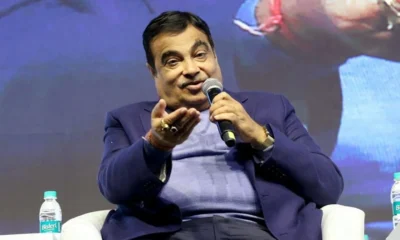
 India News13 hours ago
India News13 hours ago
 India News13 hours ago
India News13 hours ago
 India News17 hours ago
India News17 hours ago
 India News8 hours ago
India News8 hours ago
 India News8 hours ago
India News8 hours ago











